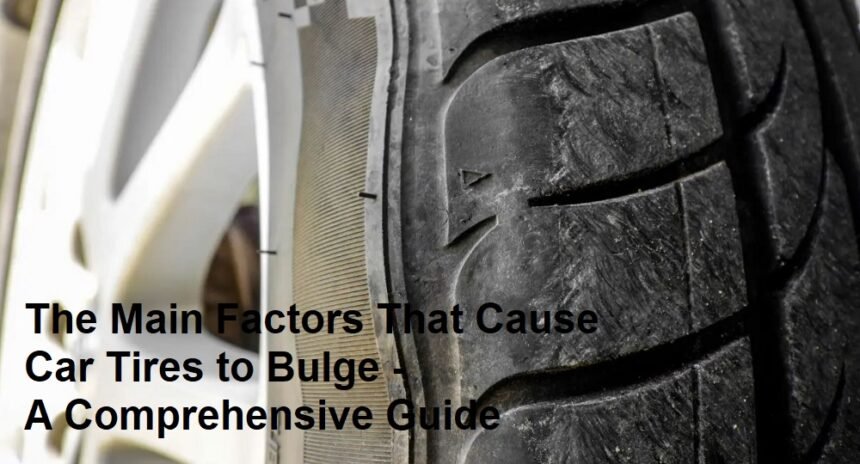Car tire bulges are a concerning sign that something is wrong with your vehicle’s tires. These bulges, which appear as visible bumps or protrusions on the sidewalls, often indicate internal structural damage. Left unaddressed, a bulging tire can lead to severe safety hazards, including tire blowouts, loss of vehicle control, and even accidents. Understanding the primary factors that contribute to tire bulging is essential for every driver, as early detection and prevention can help avoid potentially dangerous situations on the road.
Modern car tires are constructed with multiple layers of fabric and steel cords embedded in durable rubber. This complex structure is designed to absorb shocks and support the weight of the vehicle. A tire bulge typically forms when one or more of these internal layers become damaged or begin to separate from the outer rubber layers. As the tire endures continuous stress during driving, the weakened area starts to bulge outward. Often, this process occurs gradually, making it vital for drivers to regularly inspect their tires for any irregularities.
One of the most common causes of tire bulging is impact damage from road hazards. When a tire hits a pothole, curb, or stray debris on the road, the force of the impact can compromise the tire’s internal structure. Even if the tire does not burst immediately, the damage may weaken the sidewall, making it prone to developing a bulge over time. This kind of damage is frequently hard to detect until the bulge becomes visible. Therefore, routine tire inspections—especially after driving on poorly maintained roads—are crucial for catching these issues early.
Another significant factor is improper tire inflation. Maintaining the correct tire pressure is vital for the longevity and performance of your tires. Underinflation causes the tire sidewall to flex excessively, leading to increased heat buildup. Over time, this excess heat can degrade the internal components of the tire, eventually causing a bulge. Conversely, overinflation can also be problematic. When a tire is overinflated, it becomes overly rigid, which may lead to cracks in the sidewall or cause the internal layers to separate. To prevent these issues, it is important to check your tire pressure regularly and ensure it aligns with the manufacturer’s recommended levels.
Overloading your vehicle is yet another factor that can contribute to tire bulging. Every tire is engineered to support a specific maximum weight. When a tire is forced to carry more weight than it was designed for, the additional stress accelerates the wear and tear on its structure. This extra load, particularly when combined with high-speed driving, generates more heat within the tire. Excessive heat can weaken the tire’s rubber and internal components, eventually leading to a bulge. Adhering to your vehicle’s weight limits and avoiding unnecessary loads—especially on long trips or during hot weather—can significantly reduce this risk.
In some cases, manufacturing defects or the natural aging process of tires can also result in bulging. Despite strict quality controls, defects during production can sometimes create weak spots in a tire’s structure that are prone to bulging under normal driving conditions. Additionally, as tires age, the rubber naturally degrades. Continuous exposure to harsh weather conditions, such as extreme heat or cold, further accelerates this degradation. Regular maintenance and timely replacement of aging tires are important steps in preventing bulging caused by these factors.
In conclusion, car tire bulges are a serious warning sign of underlying issues that can compromise vehicle safety. The main factors leading to tire bulging include impact damage from road hazards, improper tire inflation, overloading, excessive heat, as well as manufacturing defects or natural aging. By understanding these factors and taking proactive measures—such as regular tire inspections, maintaining proper tire pressure, adhering to weight limits, and replacing aging tires—drivers can significantly reduce the risk of tire bulging and ensure a safer driving experience.













